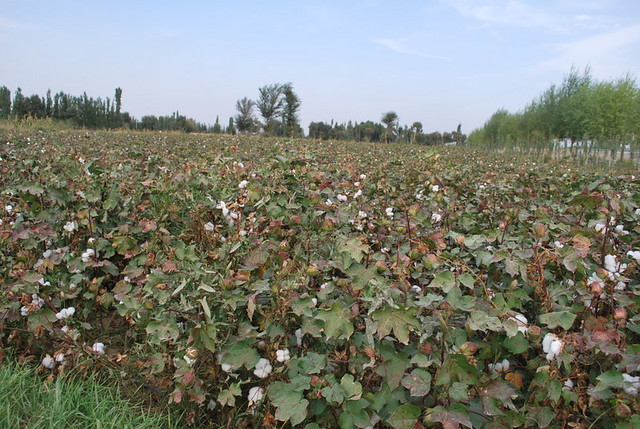September 2013
 |
| Cotton field in China. CC photo by tian yake on Flickr |
A long running-debate
about the sustainability of 'Bt' insecticide-generating GM crops is
that because they kill their single most troublesome pest, no
broad-spectrum chemicals are applied and other pests will “go
crazy”.
The story of Bt cotton in
China supports this concern. More than 90% of Chinese cotton is now
genetically transformed to control corn boll-worm (CBW). “Spraying
specifically for CBW from 1997 when Bt cotton was introduced until
2010 decreased by a spectacular two-thirds. Total sprayings for all
insect pests during this period was reduced by a less spectacular
14%. Spraying for non-CBW pests increased
by 60%.”
(APHID-FRIENDLY COTTON - July 2012)
The
secondary pests necessitating all this increased spraying included
sap-suckers, such as aphids, and herbivores, such as mirid bugs. The
actual secondary problem pest (or pests) emerging is a very local
phenomenon, and some have never before been considered 'pests'.
Reduced broad-spectrum spraying will allow existing pests to thrive,
but why should they vary so widely in type and why should novel
pests emerge? Something much more complex is going on.
A team of scientists from
Switzerland, Britain and America has been investigating an aspect of
pest control which simplistic biotech and agri-chemical approaches
ignore: the plant's own defense mechanisms to avoid being eaten.
When plants are damaged,
they produce a range of substances, referred to collectively as
'terpenoids' which are 'anti-feedants' and can be insecticidal. This
means that healthy plants with CBW damage will generate terpenoids to
protect themselves. The defenses triggered by this damage will keep
other herbivors at bay, and also sap-suckers which do not, by
themselves, inflict enough physical damage to elicit a plant
response.
Removing both the CBW damage
and the chemical sprays at the same time leaves the plant
defenseless, especially against aphids.
The experiment was carried
out under laboratory conditions, and didn't translate directly into
the field situation, where many more interacting factors come into
play.
OUR COMMENT
Are we causing more problems in our food supply than we're solving with our high-tech approach to plant life?
SOURCES:
- Steffen Hagenbucher et al., 2013, Pest trade-offs in technology: reduced damage by caterpillars in Bt cotton benefits aphids, Proceedings of the Royal Society
- Use of GM cotton linked to rise in aphid numbers, www.scidev.net, 8.04.13
No comments:
Post a Comment
Thanks for your comment. All comments are moderated before they are published.